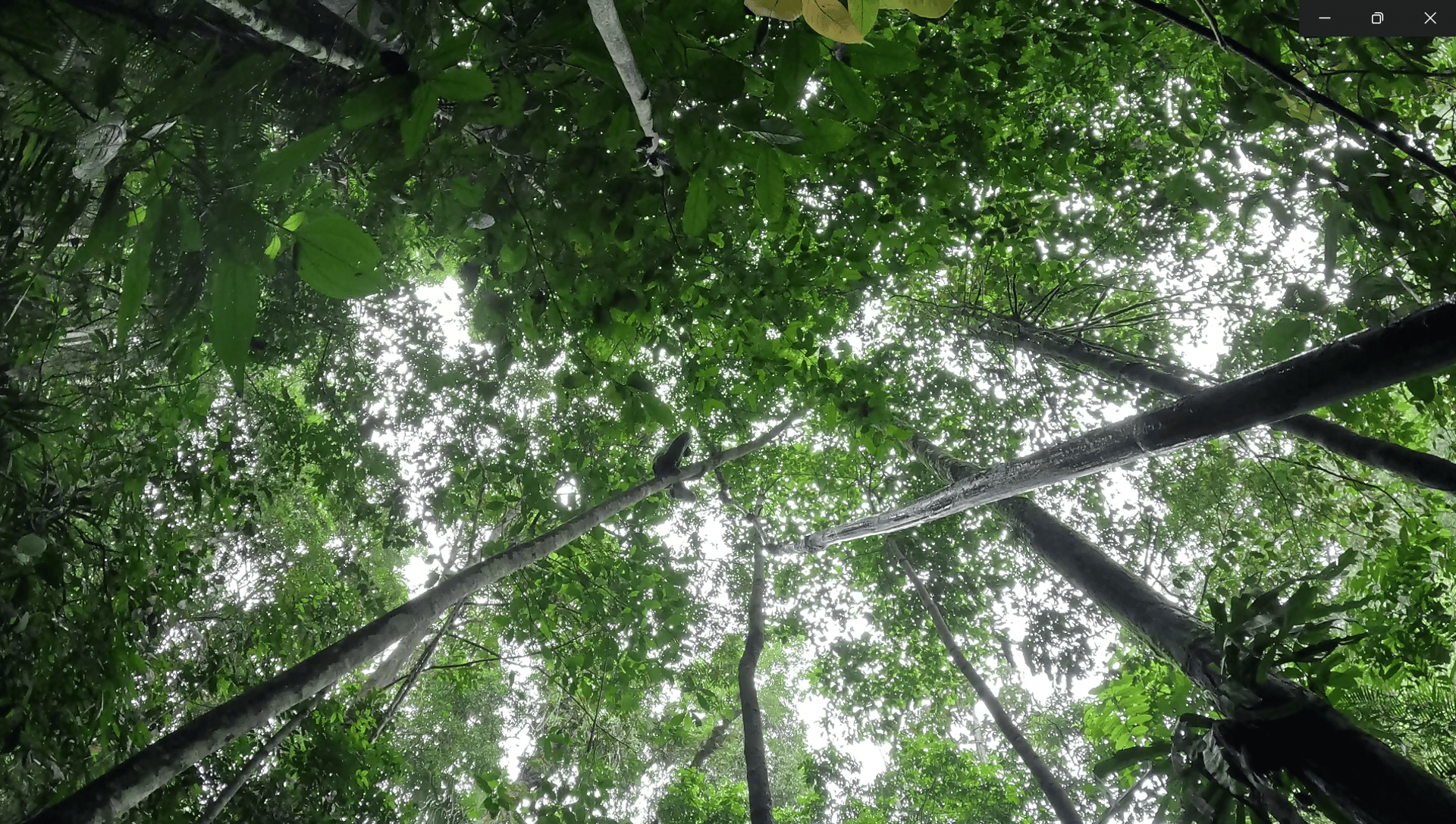
The Sustainable Rattan Initiative was born from a crucial understanding of the misperceptions surrounding rattan, particularly the belief that its exploitation could coexist with natural regeneration. Historically, rampant over-exploitation has significantly diminished rattan availability, with less than 5% of the 3,000 fruits produced by the rattan plant surviving to maturity. This reality highlights a pressing challenge: the stagnant price of rattan has remained unjustly low for decades, placing immense pressure on farmers who rely on this vital resource. Our initiative seeks to correct these misconceptions and revitalize the Indonesian rattan industry, restoring hope for the "rattan heroes"—the dedicated farmers. By fostering sustainable practices and ensuring fair compensation, we aim to create a thriving ecosystem for both rattan and its cultivators, paving the way for a more sustainable future.
Toward a Sustainable Future: The Rattan Initiative -Transforming Lives and Ecosystems Through Rattan
The Rattan Cycle
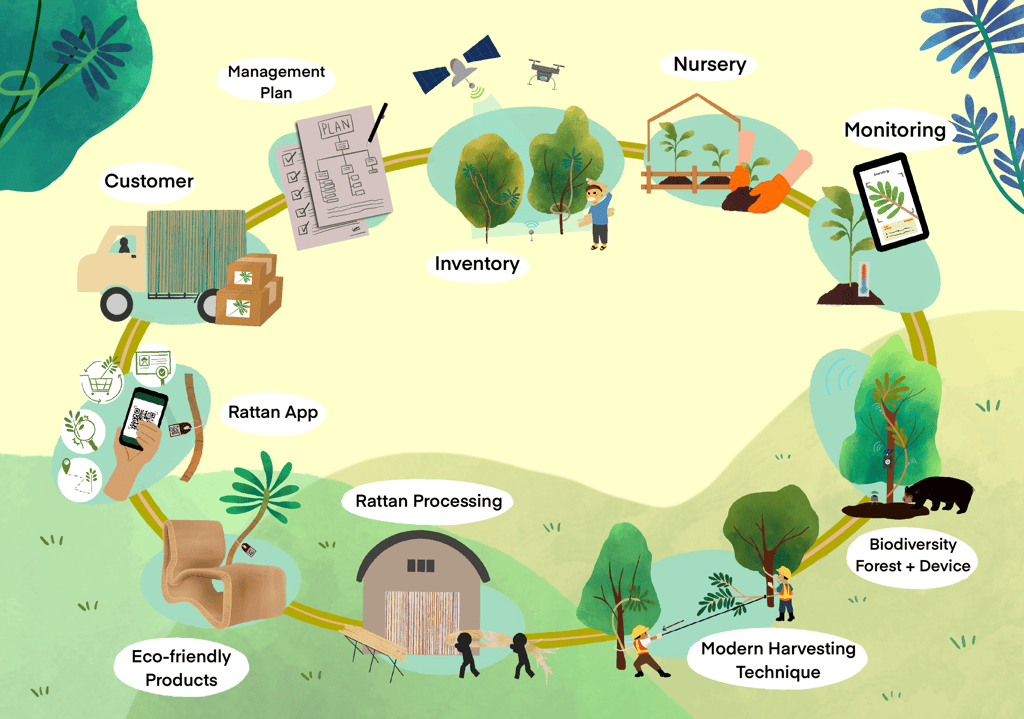

Rattan Inventory
The primary objective of conducting a rattan inventory in Indonesia is to thoroughly document and assess the approximately 512 identified rattan species present in the region. Despite this rich biodiversity, only a fraction of these species are currently utilized in the rattan industry, limiting the potential for sustainable development and economic growth. By systematically cataloging these species, we aim to identify underutilized varieties that could be integrated into production, fostering innovation and diversification within the industry. This comprehensive inventory will not only help us promote sustainable harvesting practices but also contribute to the conservation of rattan species, ensuring their survival for future generations while enhancing the livelihoods of local communities reliant on this vital resource. Our efforts will ultimately support the development of a more resilient and sustainable rattan industry in Indonesia.
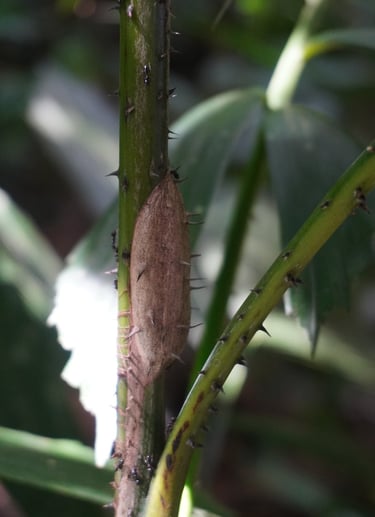

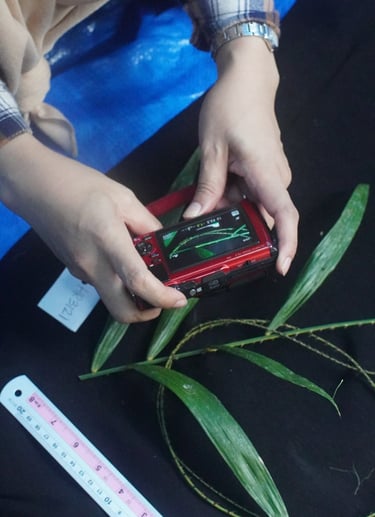

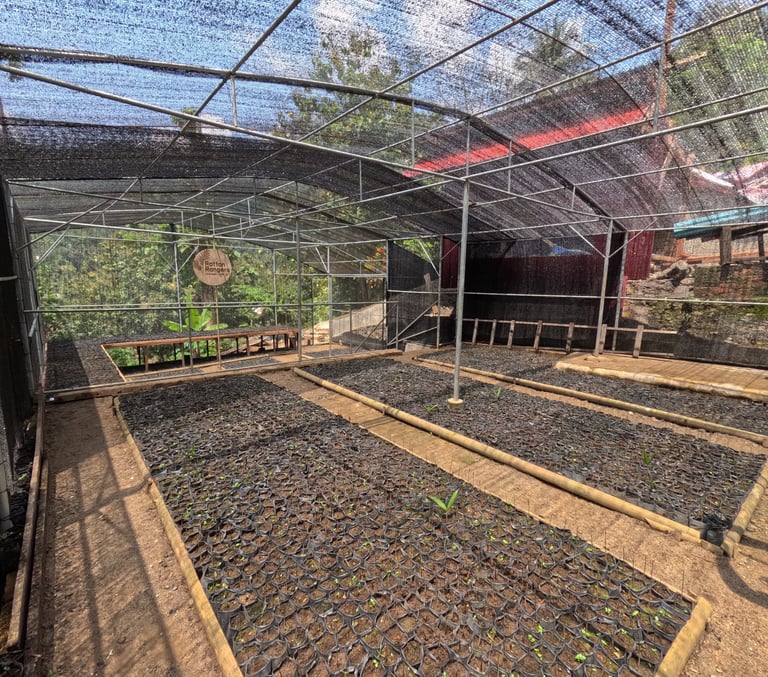

Rattan Nursery
Our aim is to establish a rattan nursery dedicated to regenerating rattan populations that have been significantly depleted due to unsustainable exploitation in the past. The overharvesting of rattan has led to a substantial imbalance in natural regeneration, threatening the future of this valuable resource. By creating a dedicated nursery, we intend to cultivate new rattan plants and foster genetic diversity, ensuring a more sustainable approach to rattan production. This initiative not only aims to restore ecological balance but also to promote awareness about responsible rattan harvesting practices. Through our efforts, we hope to contribute positively to the rattan industry while supporting local communities that rely on this vital resource for their livelihoods. Ultimately, our project seeks to harmonize economic needs with environmental sustainability, paving the way for a more responsible future for rattan.
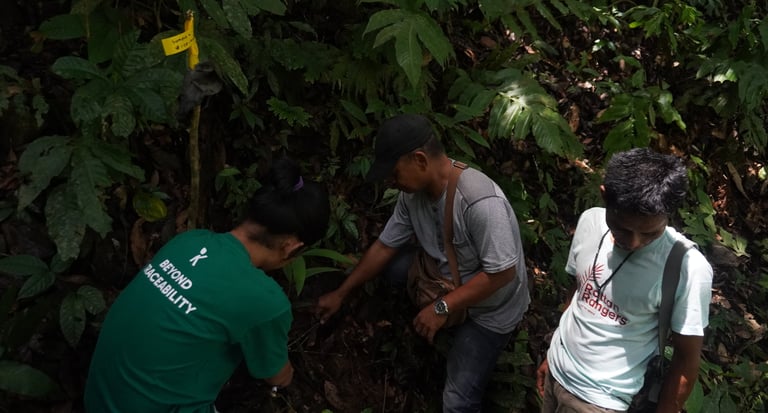

Rattan Replanting
Our aim is to promote the replanting of rattan due to the widespread misconception that rattan can naturally regenerate in balance with its exploitation. In reality, the regeneration rate of rattan is significantly lower than its rate of exploitation. While a rattan plant can produce around 3,000 fruits, less than 5% of those fruits ultimately survive to become mature rattan plants. This alarming statistic highlights the need for sustainable practices and intervention to ensure the preservation of rattan species. By raising awareness and implementing replanting initiatives, we can help restore rattan populations and contribute to biodiversity while supporting the communities that rely on this valuable resource.
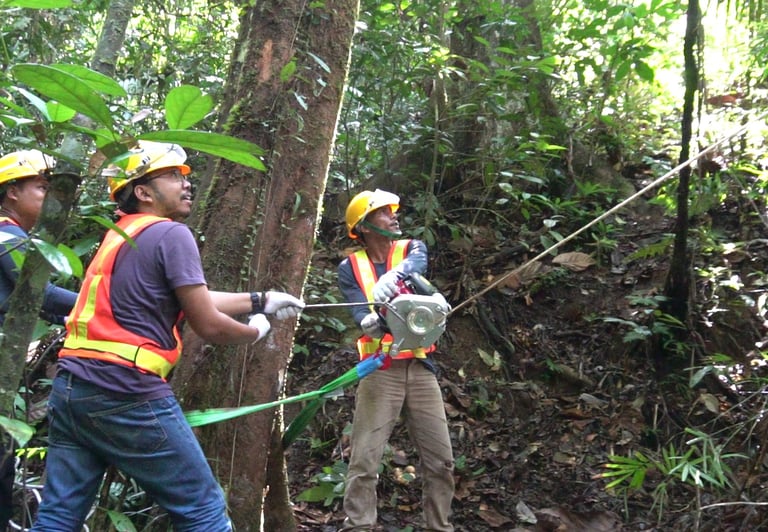

Sustainable Rattan Harvesting
In our commitment to sustainable practices, we have successfully invented a portable winch designed specifically for rattan harvesting. This innovative tool significantly reduces the need for traditional harvesting methods that often lead to the clearing of trees, preserving the local ecosystem. Additionally, we have taken the initiative to train members of the local community in the use of this technology, empowering them with the skills needed to harvest rattan responsibly. By equipping them with sustainable techniques, we aim to create a harmonious balance between economic growth and environmental conservation, ensuring that both the community and the forest can thrive together. Our approach not only promotes rattan as a sustainable resource but also fosters a culture of environmental awareness among local harvesters.
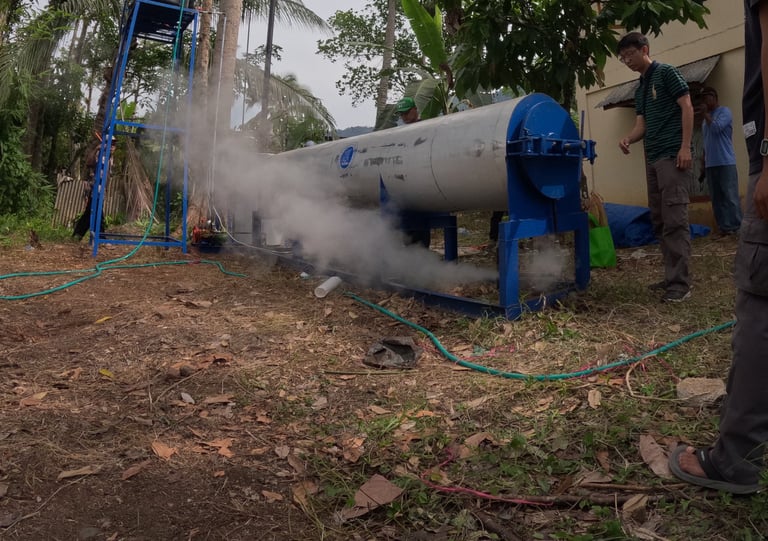

Sustainable Rattan Processing
We are excited to announce the development of a pioneering sustainable method for processing rattan, utilizing an innovative device that combines an autoclave method, steam machine, and oven. Supported by ITB (Bandung Technology Institute), this integrated solution significantly reduces the environmental impact associated with traditional processing methods, which typically rely on diesel-powered frying systems. By adopting this new approach, we not only enhance the efficiency of rattan processing but also contribute to the preservation of our natural resources. Our goal is to set a new standard in the industry, promoting eco-friendly alternatives that align with the global movement towards sustainability. This breakthrough technology demonstrates our commitment to creating a greener future while ensuring high-quality rattan products.
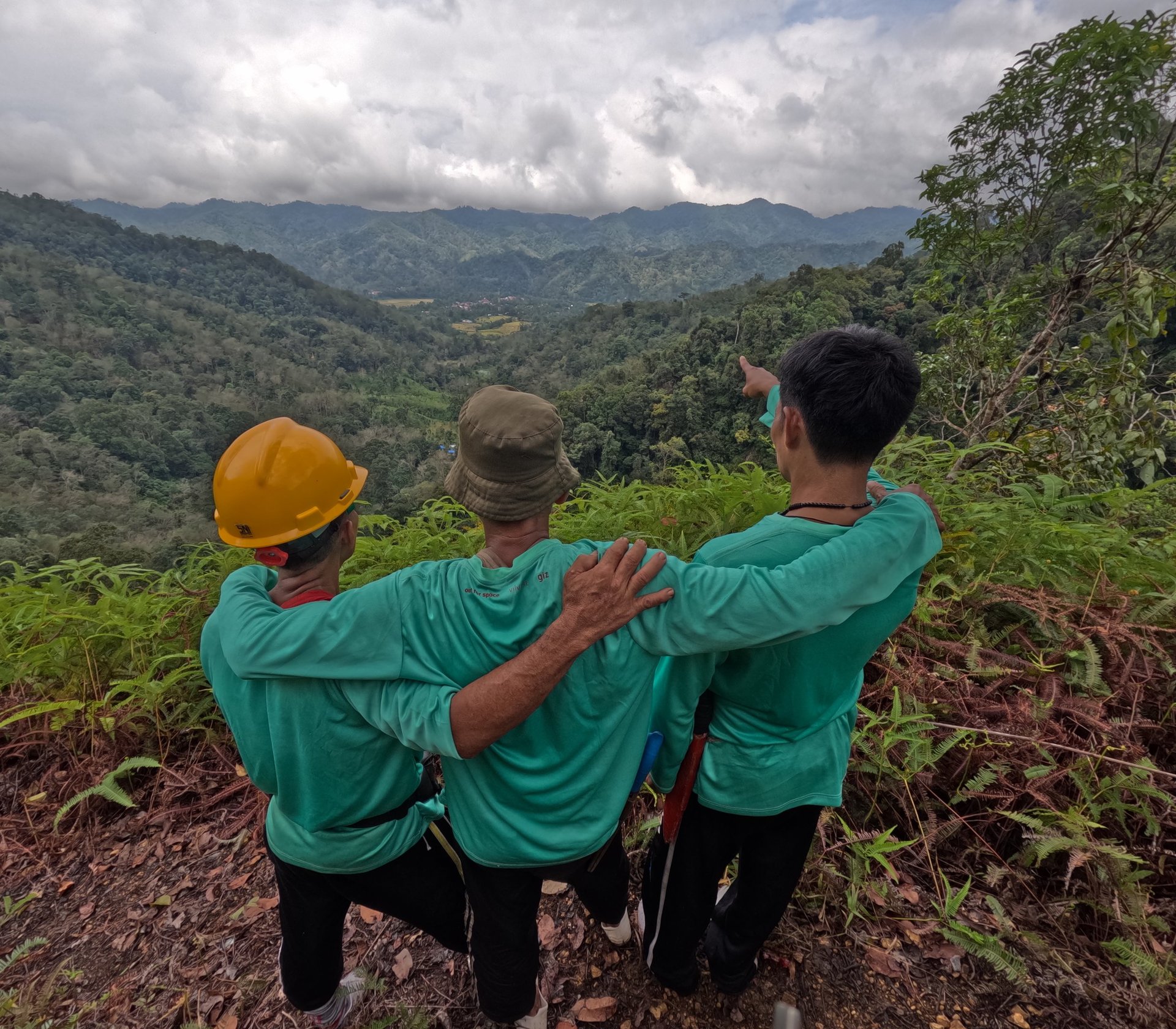
Embrace Sustainability and Make a Difference!
Join our sustainable movement and help preserve the forest by utilizing the potential of rattan. By participating in our initiatives, you can make a positive impact on the environment while also supporting local communities that rely on rattan for their livelihoods. Together, we can work towards creating a more sustainable future, where the natural resources are used responsibly and forests are protected for generations to come. Join us in this important mission and be part of the solution to preserve our planet's precious ecosystems. Together, we can make a difference and ensure that rattan is used in a way that benefits both people and the environment. Let's come together and make a lasting impact for the benefit of our planet and future generations.

